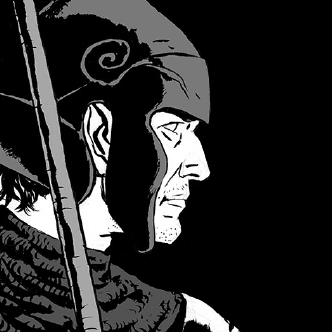Il dolce Fellini
- Jarek Kupść

- Mar 21, 2020
- 3 min read
Updated: May 8, 2020
For newcomers to Fellini only:
Much has been written recently about La Dolce Vita – and deservingly so. But if you haven't experienced any work of the Italian maestro, acquaint yourself with earlier work first, and build up to the more extravagant work gradually. A crash course would include La Strada and Nights of Cabiria – both much more accessible in their structure. La Dolce Vita is a feast of flavours for a palette which needs to be primed by an array of terrific appetisers. There is a danger, if you're not ready, to be simply overwhelmed and confused. Fellini, like Kurosawa and Bergman, is an artist who grew with his work – each consecutive film is thicker with layers. The surface of La Dolce Vita is always alluring – the visuals alone will keep you glued to the screen. But watch out for what's underneath, as you won't find a linear story for guidance.
The garish golden Jesus flying with open arms towards Rome: one of the greatest opening shots in cinema history. Cut to: a Balinese (?) dancer with bodybuilders, and you know you're in for a ride of a lifetime.

It took me many years to appreciate La Dolce Vita – its episodic structure can seem arbitrary at first, with not very likeable characters engaged in activities I have no great passion for. There is so much visual richness to take from the film that one forgets there is a very dark tone under the entire proceedings.
The surface layer is bitterly satirical, aimed mostly at the upper middle class and the media. But once you start focusing on the protagonist's face (Marcello Mastroianni), you will notice how he gradually withdraws inward, losing all pleasure and passion for la vita as he knows it. The film becomes a journey of a man trying to cling to anything which resembles true emotion. He navigates his conscience like Odysseus on the high seas. But the siren call of comfortable denial proves too hard to resist. He yields to it time and again. When he recognises his own failings, he finds himself on the wrong side of the beach, like a leviathan washed ashore. He will never make it back to Ithaca. Not many of us ever do.

8½ is a film about which it is impossible to talk without sounding pretentious. So bear with me. You will never, ever, see anything like this in your lifetime. Again, its surface perpetually tempts you with sheer beauty. Each sequence is designed like a segment of a dream. Sometimes it turns to an uneasy nightmare, but mostly it borders on a surreal reverie of childhood nostalgia, lust, and the maze of a creative process. It can be frustrating, enigmatic and, frequently, purely joyful. Stay with it to the end and you will wake up a transformed person.

The whole film is a fantasy – or a dream, if you prefer. Like cinema itself. And, as dreams tend to demonstrate, the subconscious can project some rather unpleasant imagery. Why should a film shy away from such visions?
Guido, the protagonist, is deeply flawed. We are invited to share in his fears as well as his selfish reveries. 8½ is about self-obsession of a filmmaker – the good and the bad that overlap in any self-absorbing endeavour. It would be hard to find a better film about doubts that plague the creative process.
In 8½, Fellini turned his own struggles into a poetic, sometimes Dantesque, phantasmagoric spectacle. Many have tried since, including Paolo Sorrentino (The Great Beauty), but nearly 60 years later, cinema still hasn't found a better representation of such an extraordinary skirmish with the Muses.
All of the Fellini films mentioned above are scored by Nino Rota. I cannot think of another composer who would be as instrumental in creating and sustaining a musical counterpoint equal to the cinematic image. Fellini's films, as masterful as they are, acquire another level of charm and moody splendour thanks to the orchestration. Rota didn't compose for films – he provided soundtracks to dreams.




Comments